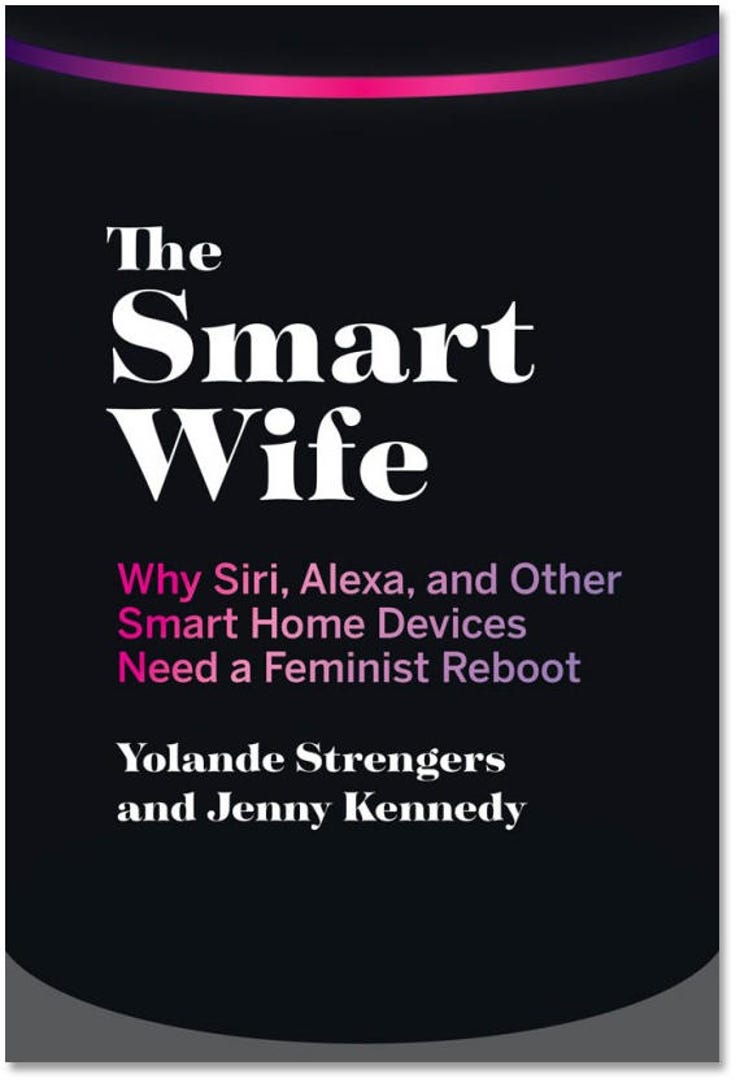The Smart Wife, book review: A feminist take on smart home tech


The Smart Wife: Why Siri, Alexa, and Other Smart Home Devices Need a Feminist Reboot • By Yolande Strengers and Jenny Kennedy • MIT Press • 320 pages • ISBN: 9780262044370 • $29.95
"Every woman needs a wife," Gloria Steinem said sometime around 1970, inspiring Judy Brady Syfers to write a fabulous essay explaining why and concluding, "My God, who wouldn't want a wife?"
The people in charge at Amazon, Google, and Apple probably aren't great readers of 1970s feminist writing, but, as Yolande Strengers and Jenny Kennedy write in The Smart Wife, they have certainly imbibed the stereotypes. In particular, Strengers and Kennedy trace the origins of a lot of our ideas about domestic robots to the beloved Rosie, in the 1962-63 US TV series The Jetsons, a counterpart to The Flintstones set in outer space.
It's become commonplace to observe that algorithmic decision-making systems display the biases that have been incorporated into their historical training data. Strengers and Kennedy show how much further embedding societal prejudices into supposedly modern technology can go.
The book begins with a chapter on domestic robots -- the Rosies of today -- and then devotes a chapter each to hospitality robots, voice assistants such as Alexa and Siri, sex robots, and male roles. For the latter chapter, Strengers and Kennedy have accurately observed that while domestic chores still are largely performed by women, men generally manage domestic digital devices. For the sexbot chapter, it may be helpful to be young enough not to remember Ira Levin's 1972 novel, The Stepford Wives.
SEE: An IT pro's guide to robotic process automation (free PDF) (TechRepublic)
The authors then move on to flaws, arguing that the framing of these assistants as female aligns with the long-time narrative that sees women's bodies as awkward and "different". This might seem like a stretch, but won't if you pause to recollect that Caroline Criado-Perez's 2019 book, Invisible Women, repeatedly documents the society-wide framing of men as "the default" and women's differences as inconvenient but disposable, whether you're talking about the size of crash test dummies or the design of personal protective equipment.
Startling detail
Strengers and Kennedy have amassed plenty of startling detail. A company that sold costumes for Roombas (!) reported that its most popular product was a French maid's outfit. The commercial hospitality robot Pepper reads as male to Asians, but its indented waist and subservient attitude read as female to Westerners. Note that I say 'it'. I think giving a robot gender because of its shape, or the synthesised voice it's been assigned, as many people do -- including Strengers and Kennedy themselves some of the time -- is buying into the exact paradigm these writers are opposing.
So what now? Abort, Retry, Fail? Strengers and Kennedy suggest principles for rebooting the "smart wife". Among them: "queer" the devices so they no longer follow heteronormative gender stereotypes; improve the diversity of designers and programmers; reframe stories to expose hidden stereotypes; and develop new representations in fiction and other media.
I don't know if any of this is possible, as the industry has extraordinary inertia, but this book is nonetheless great fun to read.
RECENT AND RELATED CONTENT
3D-printed hearts, self-driving buses, and robots
Artificial Intelligence in healthcare is racist
Tech gifts for your favorite junior roboticists and hackers
This new tech could let your tablecloth remind you that your glass is half empty
Fast food chain to replace humans with robotic fry cook
Read more book reviews
- Exponential Progress, book review: A patchy overview of today's emerging technologies
- The System, book review: How the internet works and who runs it
- How to Survive a Robot Invasion, book review: Humans are the problem
- Hashtag Activism, book review: A sign of the times
- Smoke & Mirrors, book review: How to identify and filter out technology hype